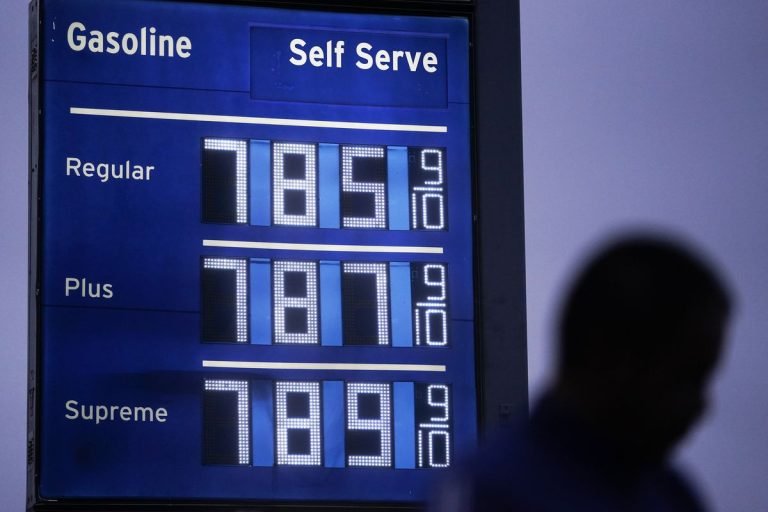
California has big climate ambitions. In 2018, the state committed to a goal of switching to 100 percent renewable energy by 2045, and the Los Angeles City Council voted last week to ban new oil and gas drilling and phase out existing wells in the region, which has one of the largest urban oilfields in the country. But closing all those wells will leave thousands of oil and gas workers without jobs, and the state is beginning to grapple with a reality that is true for the country at large: Clean energy jobs, for the most part, don’t pay as well as fossil fuel work.
According to an E&E News report from earlier this week, the California State Assembly is worried the clean energy transition may lead to “potentially negative consequences to workers and communities,” in particular due to poorer salaries and benefits. A 2021 study from the Political Economy Research Institute at the University of Massachusetts Amherst lays out the salary gap in stark detail: The average compensation for a clean energy worker in California is about $86,000. For a fossil fuel worker? About $130,000. The reason, experts say, comes down to one thing: unions.
“Fossil fuel workers are unionized,” Carol Zabin, director of the UC Berkeley Labor Center’s Green Economy program, told Recode. “Most clean energy workers are not.”
Unlike most European countries, where unions organize workers by sector rather than company, green energy startups are free to hire whomever they like at whatever wage they wish — which is exactly what happened in Oregon two years ago. Most of the local workers who had the skills necessary to build wind turbines already belonged to unions and expected union salaries, so a number of wind farm projects brought in non-unionized workers from outside the state to build their turbines instead, which allowed them to pay lower non-union wages.
“There’s a lot of anxiety,” said Mark Brenner, co-director of the University of Oregon’s Labor Education and Research Center. “How do we make sure that there’s a just transition for those workers who are in carbon-intensive industries?”
Part of the answer may come from oil and gas companies that are investing in clean energy themselves, said Tom Kochan, a faculty member of the MIT Institute for Work and Employment Research. “They know better than anyone else what different kinds of skills are needed,” Kochan told Recode.
Labor unions already tend to have training and apprenticeships built into their structure, Kochan said, and by working with those companies to invest in retraining workers with fossil fuel expertise, they can become what he calls the “education and training providers of choice” for green energy companies, providing them with highly skilled workers who do not need additional training to build clean energy infrastructure.
In 2020, the energy company Ørsted, which was previously the Danish Oil and Natural Gas company and is now the largest offshore wind developer in the world, took a step in that direction by partnering with North America’s Building Trade Unions (NABTU) to develop an offshore wind project, with trainings and apprenticeships built in to help NABTU’s members transition to green energy.
But, as Ella Nilsen wrote for Vox last year, the most important step would come through policy. Unions and labor laws are both weaker now than they were in the past, Zabin said, and states and the federal government need to ensure that future clean energy projects, especially those that are subsidized with public funds, include strong labor protections. In the short term, this will mean oil and gas workers who transition to clean energy will be able to maintain the lives they’ve built — though Zabin points out that some of their skills might be better suited for work in other industries altogether.
Making sure future clean energy jobs treat workers as well as or better than fossil fuel jobs will also ease the overall transition to clean energy, which is essential for the well-being of the planet. Jobs are an essential bargaining chip in American politics, and policymakers have an unprecedented opportunity to shape the clean energy industry while it is still nascent to set ambitious climate goals that don’t come at the expense of workers. President Joe Biden seems to be thinking about this already, saying he wants to ensure clean energy jobs created by his administration will be “good-paying union jobs.”
That was the route labor unions took in Oregon, pushing state lawmakers to bake labor standards into large-scale renewable projects — an endeavor that succeeded with House Bill 2021, which passed last year. “It was a really great example of using a climate initiative to achieve other public policy objectives,” Brenner said. “We’re promoting clean energy, and at the same time we’re making sure folks are getting valuable skills and experience so that they can have long, strong careers.”
This story was first published in the Recode newsletter. Sign up here so you don’t miss the next one!






